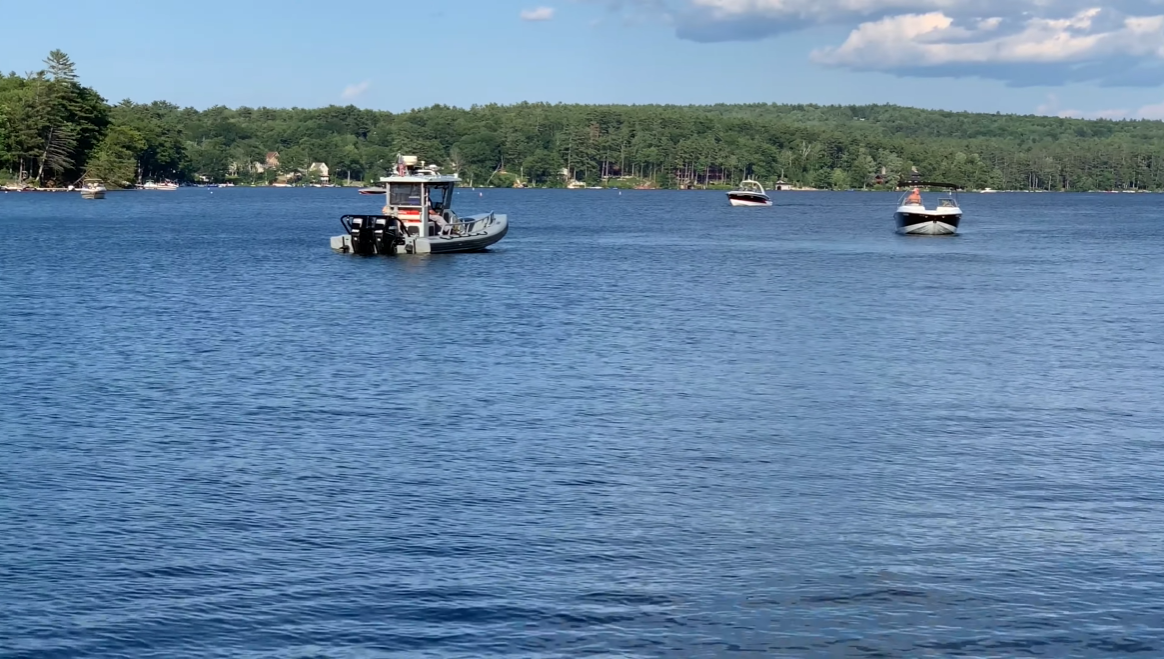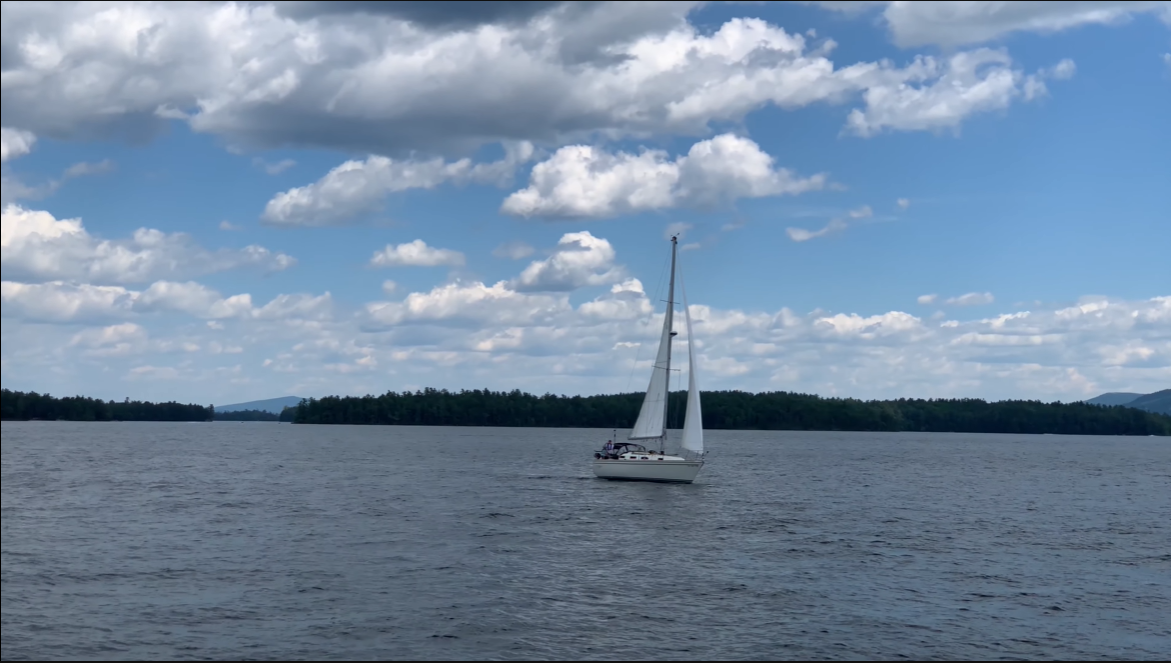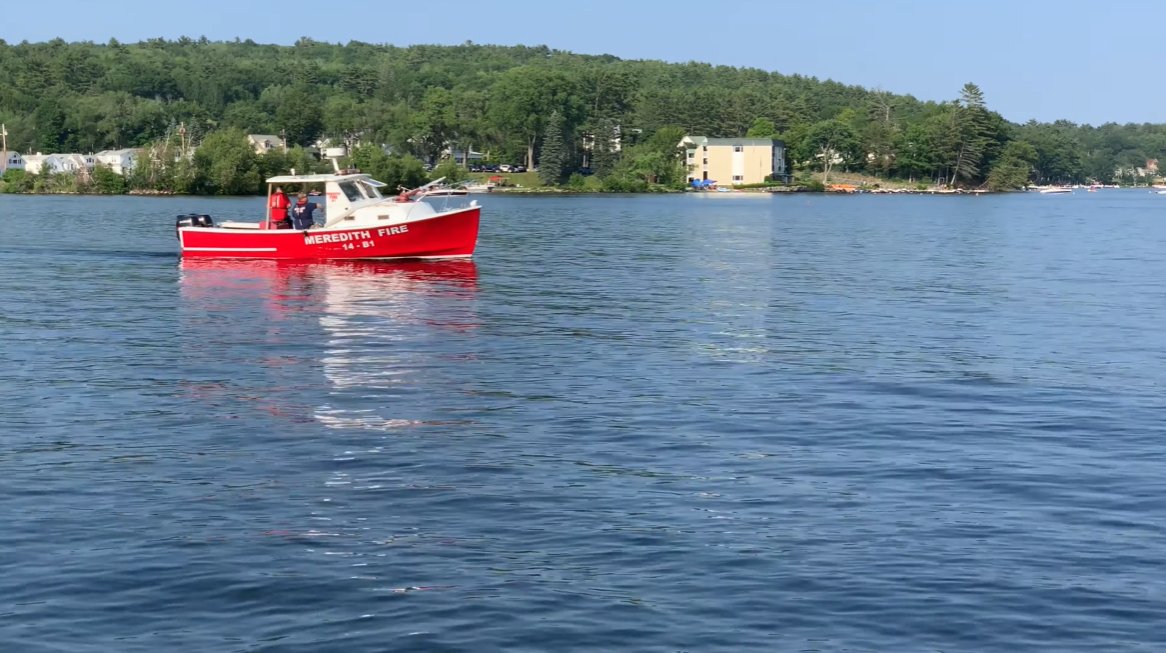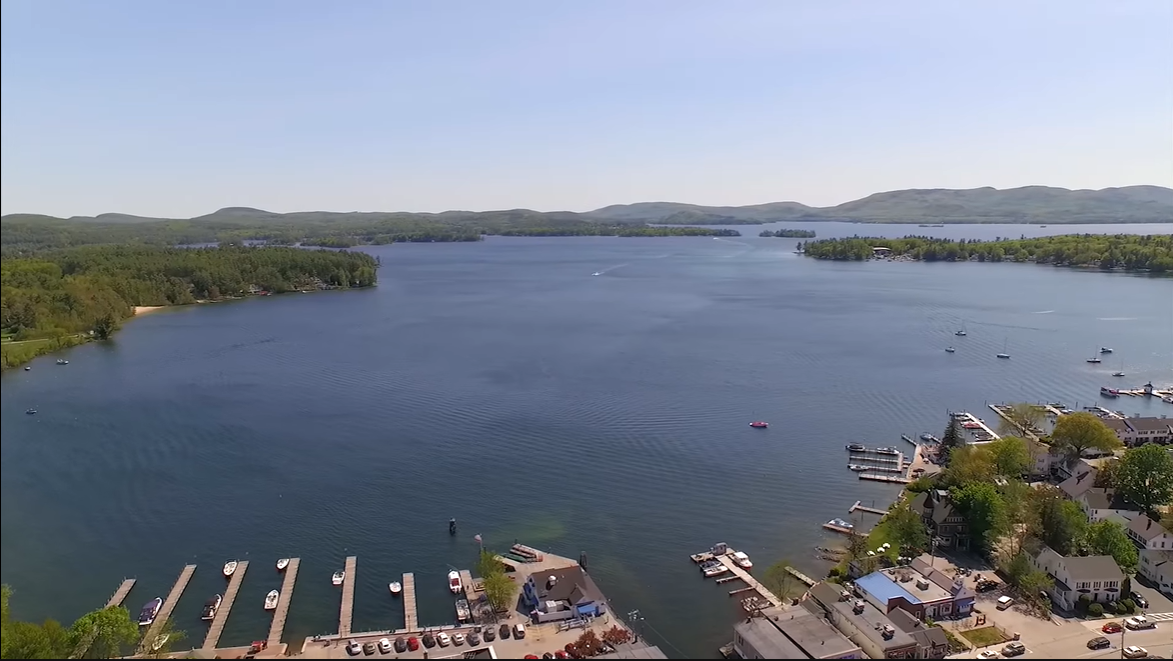Lake Winnipesaukee
Lake Winnipesaukee is the largest lake in the U.S. state of New Hampshire, located in the Lakes Region at the foothills of the White Mountains. Covering approximately 71 square miles (184 square kilometers), the lake has a shoreline of about 288 miles (463 kilometers) and contains more than 250 islands, ranging in size from tiny rock outcroppings to larger inhabited islands such as Bear Island and Governor's Island. The lake's maximum depth is around 213 feet (65 meters), with an average depth of 43 feet (13 meters).
.png) |
| Lake Winnipesaukee |
The name "Winnipesaukee" is derived from an Abenaki term meaning "Smile of the Great Spirit" or "Beautiful Water in a High Place," reflecting the area's deep cultural and spiritual significance to Indigenous peoples. Native American tribes, including the Abenaki, historically inhabited the region, using the lake for fishing, transportation, and seasonal habitation.
.png) |
Lake Winnipesaukee
|
Lake Winnipesaukee has long been a popular tourist destination, attracting visitors with its clear waters, scenic views, and recreational opportunities. Boating, fishing, swimming, and water skiing are popular activities during the summer months, while winter offers ice fishing, snowmobiling, and ice sailing. The lake is surrounded by several charming towns and villages, including Meredith, Laconia, Wolfeboro, and Alton, each offering unique attractions, dining, and accommodations.
.png) |
| Lake Winnipesaukee |
.png) |
| Lake Winnipesaukee |
The lake features several notable landmarks, including Weirs Beach, known for its boardwalk and arcades, and the historic M/S Mount Washington, a cruise ship that has been offering scenic tours of the lake since 1872. Another point of interest is Castle in the Clouds, a historic mansion located in Moultonborough that provides panoramic views of the lake and surrounding mountains.
.png) |
| Lake Winnipesaukee |
Fishing is a major draw at Lake Winnipesaukee, with abundant species such as lake trout, rainbow trout, landlocked salmon, smallmouth bass, and yellow perch. Anglers flock to the lake throughout the year, with ice fishing becoming particularly popular in the winter months.
The lake plays an important role in New Hampshire's culture and economy. It hosts annual events such as the Laconia Motorcycle Week, one of the largest motorcycle rallies in the country, and the Ice-Out contest, a tradition where participants guess the date when the ice covering the lake will melt enough to allow the M/S Mount Washington to navigate between its ports.
Lake Winnipesaukee's natural beauty is protected through conservation efforts aimed at preserving water quality and maintaining its ecological balance. Organizations such as the Lake Winnipesaukee Association work to address environmental challenges, including pollution, invasive species, and shoreline development.
In addition to outdoor recreation, the region offers a rich cultural experience with museums, art galleries, and seasonal festivals that highlight the local heritage and community spirit. Whether visitors seek adventure on the water or a peaceful retreat surrounded by nature, Lake Winnipesaukee continues to be a cherished destination for generations of families and travelers.
FAQs
Q. Where is Lake Winnipesaukee?/What county is Lake Winnipesaukee in?
A. Lake Winnipesaukee is located in the U.S. state of New Hampshire. It is situated in Belknap County and is part of the Lakes Region of the state.
 |
| Lake Winnipesaukee Map |
Q. What town is Lake Winnipesaukee in?
A. The lake is surrounded by several towns, including Laconia, Meredith, Wolfeboro, Alton, and Gilford. Each of these towns has its own shoreline along the lake, and they contribute to the overall charm and attractions of the Lake Winnipesaukee area. The lake itself is not located within a specific town; rather, it spans across multiple towns in the region.
Q. How big is Lake Winnipesaukee?/How deep is Lake Winnipesaukee?
A. Lake Winnipesaukee is the largest lake in the U.S. state of New Hampshire, covering approximately 72 square miles (186 square kilometers). It is a relatively large and deep lake, with a maximum depth of around 212 feet (65 meters). The irregular shape of the lake includes a number of bays and islands.
Q. How many acres is Lake Winnipesaukee?
A. Lake Winnipesaukee in New Hampshire covers approximately 44,586 acres, making it the largest lake in the state.
Q. How many islands in Lake Winnipesaukee?
A. Lake Winnipesaukee is known for its numerous islands, and there are more than 250 islands scattered across its waters. These islands vary in size, with some being quite small and others more substantial. The largest island on Lake Winnipesaukee is Bear Island. Other notable islands include Long Island, Rattlesnake Island, and many more.
Lake Winnipesaukee Photos (Lake Winnipesaukee Pictures)
.png) |
| Lake Winnipesaukee |
.png) |
| Lake Winnipesaukee |
.png) |
| Lake Winnipesaukee |
.png) |
| Lake Winnipesaukee |
.png) |
| Lake Winnipesaukee |
.png) |
| Lake Winnipesaukee |
.png) |
| Lake Winnipesaukee |
.png) |
| Lake Winnipesaukee |
.png) |
| Lake Winnipesaukee |
.png) |
| Lake Winnipesaukee |
.png) |
| Lake Winnipesaukee |
.png) |
| Lake Winnipesaukee |
.png) |
| Lake Winnipesaukee |
.png) |
| Lake Winnipesaukee |
.png) |
| Lake Winnipesaukee |
.png) |
| Lake Winnipesaukee |
.png) |
| Lake Winnipesaukee |
.png) |
| Lake Winnipesaukee |
.png) |
| Lake Winnipesaukee |
.png) |
| Lake Winnipesaukee |
.png) |
| Lake Winnipesaukee |
.png) |
| Lake Winnipesaukee |
.png) |
| Lake Winnipesaukee |
.png) |
| Lake Winnipesaukee |
.png) |
| Lake Winnipesaukee |
.png) |
| Lake Winnipesaukee |
.png)
.png)
.png)
.png)
.png)

.png)
.png)
.png)
.png)
.png)
.png)
.png)
.png)
.png)
.png)
.png)
.png)
.png)
.png)
.png)
.png)

.png)
.png)
.png)
.png)
.png)
.png)
.png)
.png)
.png)
.png)
No comments:
Post a Comment